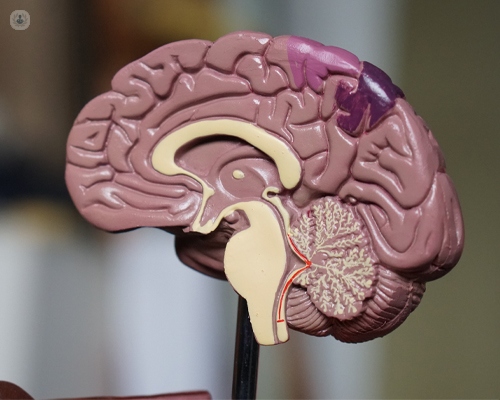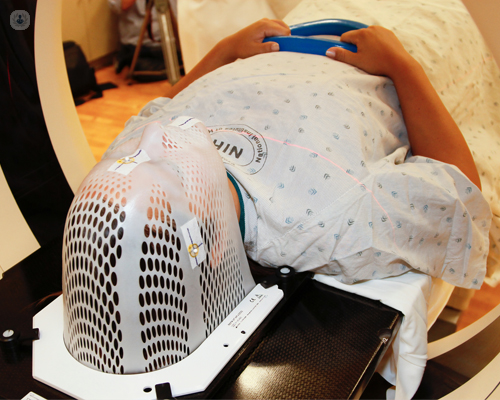Early visual impairment: the brain or the eyeball?
Escrito por:One of the most common causes of visual impairment in children in the developed world and increasingly so in the developing world, is damage to the visual parts of the brain as opposed to the eye itself. Mr Richard Bowman is a consultant paediatric ophthalmologist at Great Osmond Street Hospital, one of the world’s largest children’s hospitals, and associate professor at the International Centre for Eye Health in London. He conducts research into children’s eye problems and how to help them across the globe, and now he is sharing his insight with us.

What are the challenges faced?
Children who are born prematurely will have difficult labour and delivery, and are vulnerable to damage to the 50 per cent part of the brain that is used to process vision. Once the damage occurs, children may be left visually impaired or blind for life as there currently aren’t good ways of preventing that damage and there’s no medical or surgical treatment for it.
One of the challenges is that no one has really taken an interest in this problem. Doctors tend to think about the eye itself; if the problem is behind the eye in the brain, they think there's nothing that can be done about it. Consequently, the children may not get the proper attention that they need to try and help maximise their development and education chances in life.
The main challenge for doctors is to try and find ways of preventing this damage, as prevention is always the most important thing. This can go as far back as managing maternal health to try and reduce the risk of premature birth. Current studies are using things like brain cooling in special care baby units or using rare gases to protect the brain. Another method of prevention is to assess and work out that some children may have poor vision because of brain damage. Their eyes and retina may look normal because the problem is in the brain. As a result, sometimes these problems can get missed, so we need to find ways of recognising this problem early.
Therefore, intervening is another challenge, like finding ways that we can actually help children and the natural plasticity of the brain. Young children's brains have a natural ability to improve and re-route around damaged areas. Specific forms of visual stimulation may aid in finding ways of actually helping the brain to recover and vision to improve. Additionally, minimising the impact of the permanent visual impairment on their education and quality of life by helping children manage it.

How are we making a difference?
There's a shortage of evidence on intervention treatment strategies for these children because it's only begun to receive the attention that it deserves and we've only just realised that it's the leading cause of visual impairment.
If we identify the problem early and start helping children as young as babies, they may have a long-term improvement in their outcome. This effort is done in a systematic way from an early age with activities such as putting them in glasses while still babies or helping to actively stimulate their vision by having them reach out to targets and then taking the child on gradually.
Occasionally, older children may have quite good vision and the visual perceptual problems that they have only become apparent as they get older and seek to become independent. They may be able to read down the optician’s eye chart quite well, but when they go out into a busy street or a busy classroom full of visual clutter they can't see effectively. If they can't see and they can't function then they can't gain the independence and their education suffers as well. Studies have been published to show that these kinds of problems can affect Maths and English scores at school, and often these poor results are due to visual problems that have been undetected. The children can be labelled as stupid or clumsy, or even sometimes autistic or having behavioural problems, when actually all of this may arise from visual problems that have gone unrecognized.
Now we’re realizing that we may have to test vision in ways that go beyond just simply looking down the letters on the optician’s eye chart. We can get an idea of what problems are going on by looking at how children can process a complex visual scene, how they can see a moving target, how they use vision to control their own body, their hands and legs movement, giving some simple tests of visual perception, and by spending a bit of time talking to parents and children. We can relate that information to areas of damage on an MRI scan of the brain so that we can understand biologically what's going on and we can understand in practice how it affects a child's everyday life.
From there, we can devise strategies to improve the areas of problem and make a big difference in their quality of life. For example, if a child can't see moving targets and is in danger of being run over by cars every time they go near a road, then there's a whole variety of video games that can be used to train children's vision to detect hazards in the edge of their vision that are moving towards them. We can do that in a completely safe environment and monitor progress safely through different levels of the game. Or simply understanding that perhaps a child can't see anything below their eye line because they've got a visual field problem down below, which is a common result of injury to the visual brain. Life can be improved by helping parents and teachers understand to teach the child to stop and look down, maybe wear bright coloured trainers on their shoes to help their feet become more visible to them, or put masking tape on the steps that they go down.

What are the latest advancements in early visual impairment?
Despite no real medical breakthroughs at the moment, there's work on preventing premature birth and work on protecting the brain in vulnerable babies. The current field is more about trying to work out what problems these children have.
Presently, we don't have technology to actually repair brain injury that's established in an older child, say five years old. However, this may be something that stem cell therapy will be able to in the future. Already there are conditions affecting the brain where you can inject stem cells into the bloodstream and these stem cells find their way to the appropriate part of the brain and help improve function. That could be something used for this problem of damage to the visual pathways in the brain over the next ten years or so.


